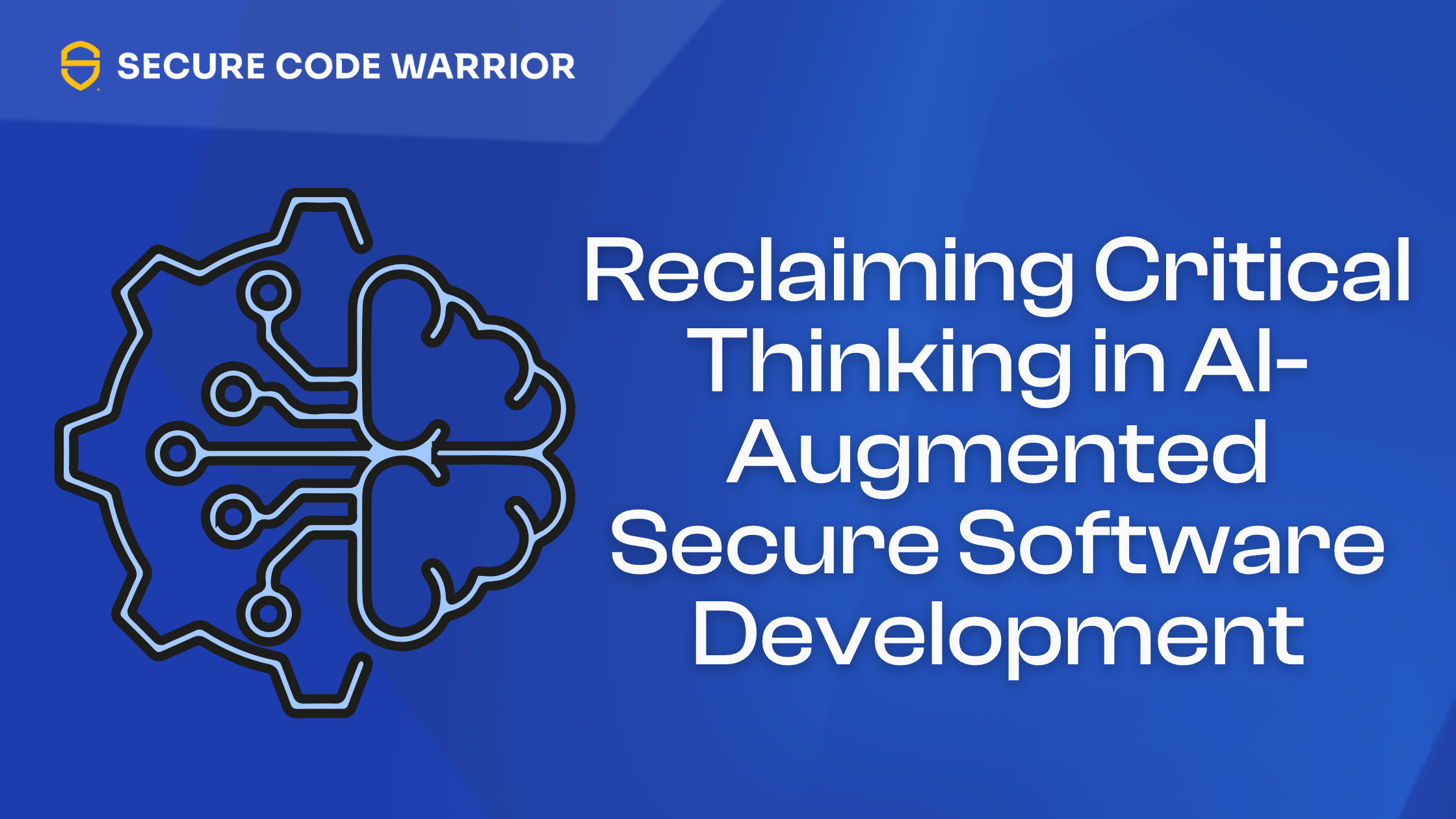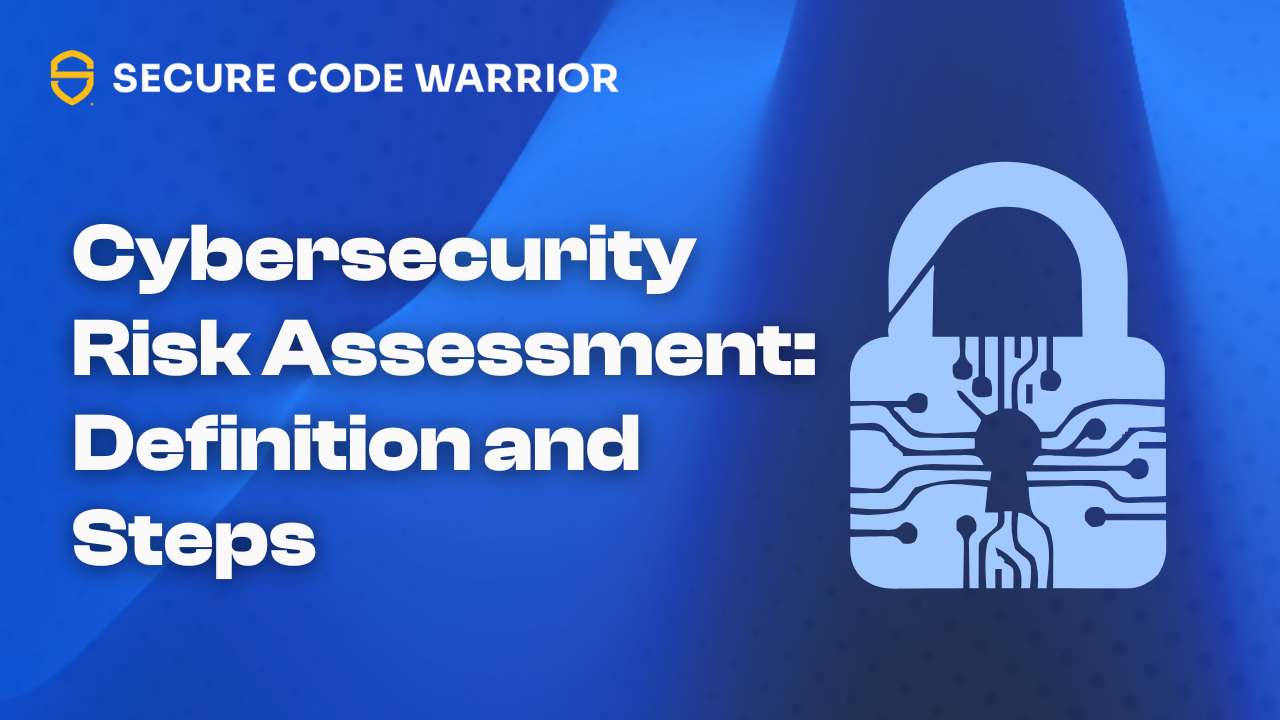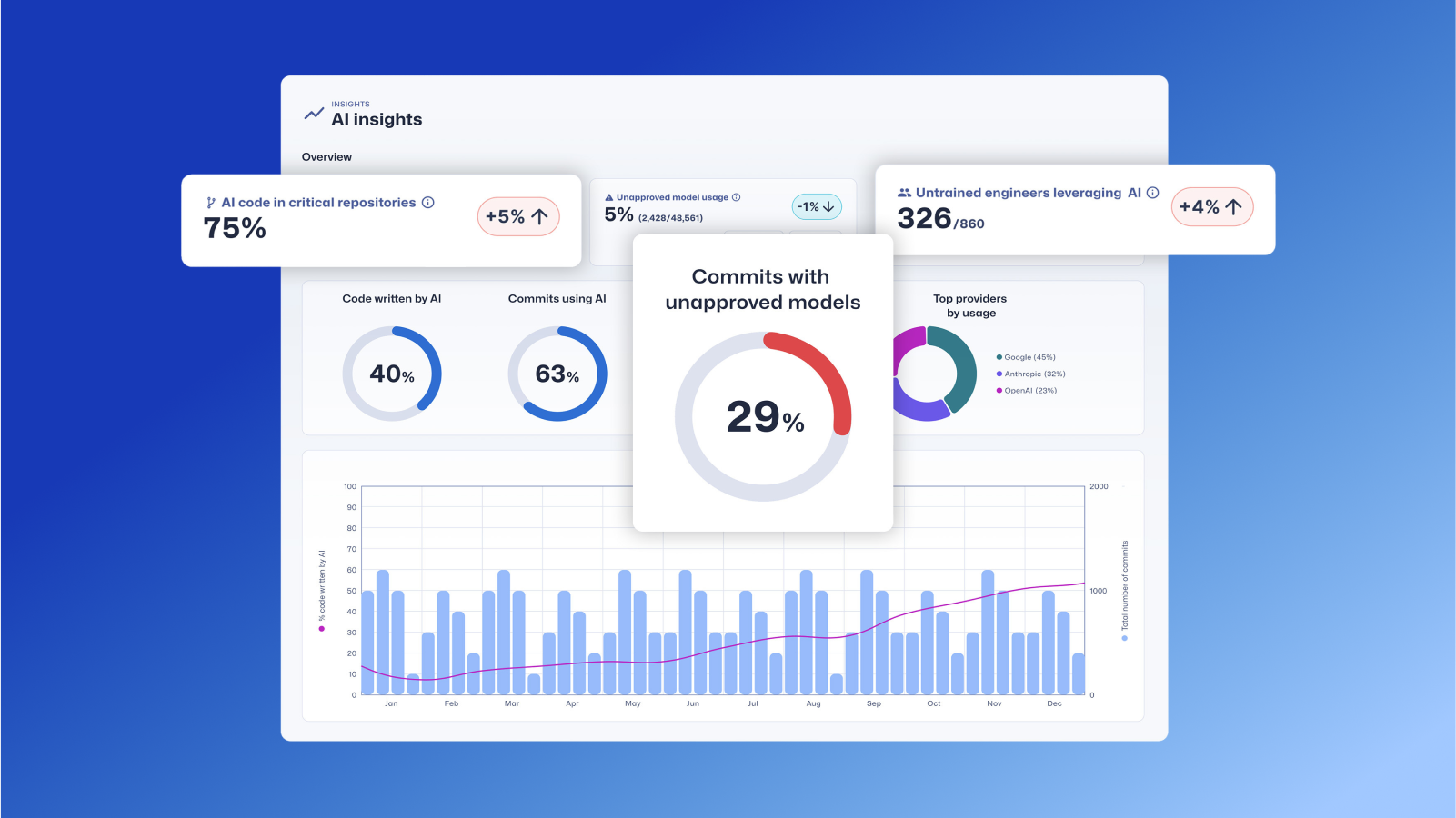
Why Cybersecurity Awareness Month Must Evolve in the Age of AI
October has long been the month when organizations double down on cybersecurity awareness. But in 2025, the stakes are very different. AI-assisted software development is no longer a pilot project – it’s mainstream. What began as autocomplete copilots has accelerated into agentic AI systems generating entire applications. Developers are no longer just authors of code; they are reviewers, editors, and defenders of AI-generated output.
This shift is both an opportunity and a risk. AI promises faster delivery, but it also magnifies exposure, compliance pressure, and the need for resilient developer security practices. Cybersecurity Awareness Month can’t keep relying on the same old phishing reminders and scam-spotting exercises. It must evolve into AI-aware readiness that equips enterprises to secure code at the speed of AI.
Why Cybersecurity Awareness Month Must Evolve
For two decades, Cybersecurity Awareness Month has followed a familiar script: spotlighting phishing and scam emails, urging stronger password hygiene, promoting multi-factor authentication, reminding employees to update software, and warning about social engineering. Some years bring emphasis on safe browsing, ransomware, data privacy, or securing remote work. These are all important, but they represent the same old playbook – a checklist of repeated themes that no longer reflect the risks enterprises actually face in an AI-driven development world.
To stay relevant, Cybersecurity Awareness Month needs to go beyond generic awareness and instead emphasize developer-first practices – from secure coding exercises to AI-powered code review – that reflect the realities of today’s software development lifecycle.
Some mature organizations have already begun moving in this direction, incorporating activities like OWASP Top 10 training or developer-focused video modules into their awareness efforts. Still, even these approaches need to evolve. The reality is that AI is fundamentally changing how code is created, reviewed, and deployed. Awareness must shift from surface-level reminders to preparing enterprises for a future where AI-generated code is the new attack surface.
At Secure Code Warrior, we believe that developers equipped with the right AI security skills can be 10x more productive for the organization – but without those skills, they can generate 10x more code, tech debt, and vulnerabilities.
The implications for enterprise security leaders are clear:
- More code, more exposure: AI accelerates delivery, but without oversight it can exponentially increase vulnerabilities and technical debt, raising enterprise risk.
- Governance, not just compliance: Governments and industry bodies are signaling that today’s standards will not be enough. For example, the EU’s AI Act already introduces requirements for transparency, risk classification, and oversight in AI systems, setting a precedent other regions may follow. CISOs should anticipate future regulation and proactively address shadow AI with visibility and governance controls.
- Skills gaps widen: Developers must be equipped to handle AI-specific attack surfaces such as prompt injection and insecure APIs. In fact, the 2025 Thales Data Threat Report found that nearly 70% of enterprises rank the pace of AI development as their top security concern, underscoring the growing mismatch between adoption and readiness.
CISOs can no longer treat AI adoption as a side initiative. It is now central to how enterprises build, deliver, and secure software.
Secure Code Warrior’s Mission: From Awareness to Action
At Secure Code Warrior, we believe awareness is only the starting point. Enterprises need measurable action to manage developer risk at scale. Our platform equips CISOs to embed secure coding into organizational DNA, delivering the visibility and outcomes required to reduce risk and strengthen resilience.
- 10,000+ secure coding lessons covering 600+ vulnerabilities across 70+ languages and frameworks.
- AI Challenges that simulate real AI workflows, giving developers realistic practice in reviewing and securing AI-generated code.
- SCW Trust Score® benchmarks that provide CISOs with objective visibility into developer risk posture and measurable progress.
- SCW Trust Agent: AI, which extends observability and governance to AI-assisted development, bringing shadow AI into the light, connecting AI-generated code to real risk metrics, and ensuring responsible adoption.
These are not just training modules; they are powerful learning and governance tools that reduce organizational risk, demonstrate resilience to boards and regulators, and deliver proven outcomes – with customers achieving up to 53% fewer vulnerabilities and up to 3X faster MTTR.
Cybermon 2025: The Age of AI
To make Cybersecurity Awareness Month tangible, Secure Code Warrior runs Cybermon, our annual October event that turns global awareness into enterprise action.
This year’s theme, The Age of AI, reflects the seismic shifts underway in software development. Cybermon 2025 begins on October 6, enabling organizations to:
- Pressure-test secure code review skills in AI-driven environments.
- Launch measurable, gamified campaigns that demonstrate progress to boards and regulators.
- Foster a culture of secure development aligned with enterprise risk management priorities.
Cybermon helps CISOs operationalize awareness, transforming it from a slogan into measurable, organization-wide impact.
A Strategic Call to Action for CISOs
AI-driven development is no longer on the horizon, it is here. The speed of code delivery is increasing, the risks are multiplying, and the responsibility to secure AI-generated code now sits squarely with enterprise leaders.
The mandate is clear:
- Close the AI security skills gap.
- Measure and reduce developer risk at scale.
- Proactively address shadow AI with visibility and governance controls, anticipating the likelihood of future regulation.
At Secure Code Warrior, we are committed to helping CISOs navigate this new era with the expertise, visibility, and governance required to secure software at enterprise scale. With capabilities like SCW Trust Score® and Trust Agent: AI, organizations can turn awareness into measurable enterprise-wide resilience. Learn more about SCW Trust Agent: AI - Visibility and Governance for Your AI-Assisted SDLC.
This October, let us move beyond surface-level awareness and embrace the Age of AI with clarity, confidence, and resilience – one secure line of code at a time.
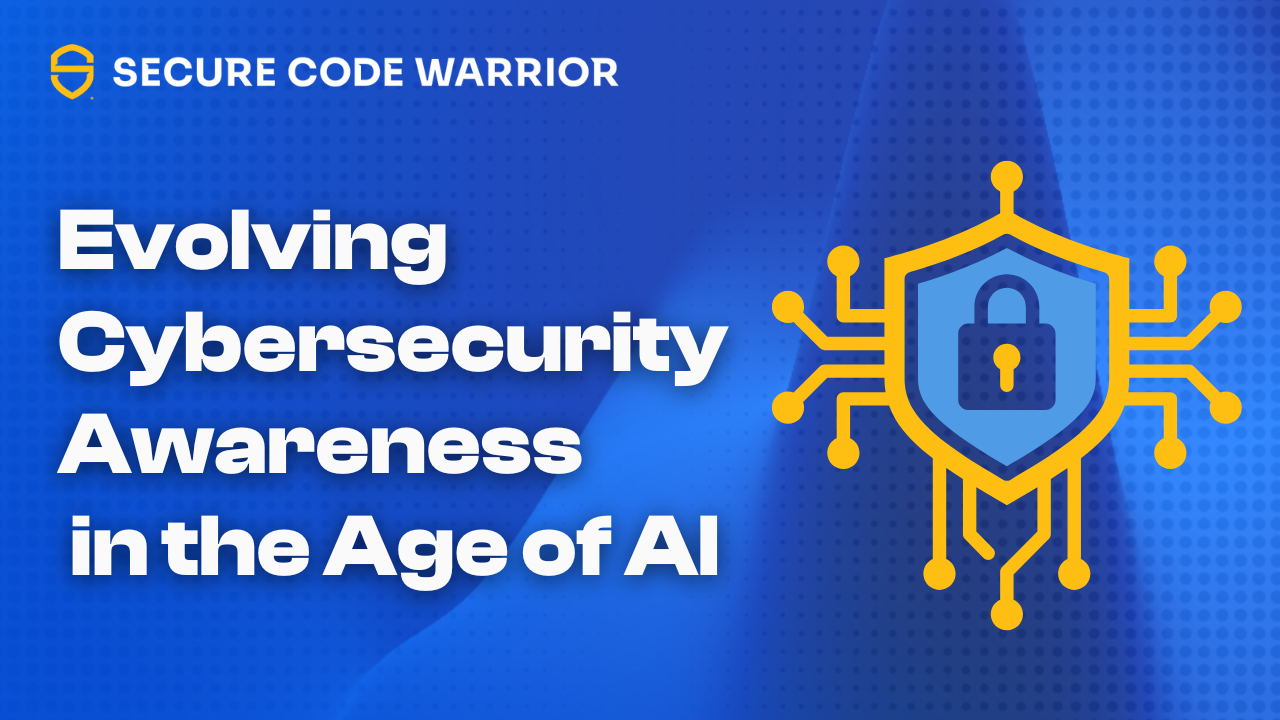

CISOs can’t rely on the same old awareness playbook. In the Age of AI, they must embrace modern approaches to safeguard code, teams, and organizations.
Shannon Holt is a cybersecurity product marketer with a background in application security, cloud security services, and compliance standards like PCI-DSS and HITRUST.
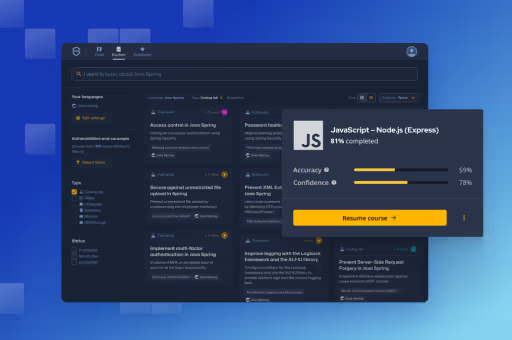
Secure Code Warrior is here for your organization to help you secure code across the entire software development lifecycle and create a culture in which cybersecurity is top of mind. Whether you’re an AppSec Manager, Developer, CISO, or anyone involved in security, we can help your organization reduce risks associated with insecure code.
Book a demoShannon Holt is a cybersecurity product marketer with a background in application security, cloud security services, and compliance standards like PCI-DSS and HITRUST.
Shannon Holt is a cybersecurity product marketer with a background in application security, cloud security services, and compliance standards like PCI-DSS and HITRUST. She’s passionate about making secure development and compliance more practical and approachable for technical teams, bridging the gap between security expectations and the realities of modern software development.


October has long been the month when organizations double down on cybersecurity awareness. But in 2025, the stakes are very different. AI-assisted software development is no longer a pilot project – it’s mainstream. What began as autocomplete copilots has accelerated into agentic AI systems generating entire applications. Developers are no longer just authors of code; they are reviewers, editors, and defenders of AI-generated output.
This shift is both an opportunity and a risk. AI promises faster delivery, but it also magnifies exposure, compliance pressure, and the need for resilient developer security practices. Cybersecurity Awareness Month can’t keep relying on the same old phishing reminders and scam-spotting exercises. It must evolve into AI-aware readiness that equips enterprises to secure code at the speed of AI.
Why Cybersecurity Awareness Month Must Evolve
For two decades, Cybersecurity Awareness Month has followed a familiar script: spotlighting phishing and scam emails, urging stronger password hygiene, promoting multi-factor authentication, reminding employees to update software, and warning about social engineering. Some years bring emphasis on safe browsing, ransomware, data privacy, or securing remote work. These are all important, but they represent the same old playbook – a checklist of repeated themes that no longer reflect the risks enterprises actually face in an AI-driven development world.
To stay relevant, Cybersecurity Awareness Month needs to go beyond generic awareness and instead emphasize developer-first practices – from secure coding exercises to AI-powered code review – that reflect the realities of today’s software development lifecycle.
Some mature organizations have already begun moving in this direction, incorporating activities like OWASP Top 10 training or developer-focused video modules into their awareness efforts. Still, even these approaches need to evolve. The reality is that AI is fundamentally changing how code is created, reviewed, and deployed. Awareness must shift from surface-level reminders to preparing enterprises for a future where AI-generated code is the new attack surface.
At Secure Code Warrior, we believe that developers equipped with the right AI security skills can be 10x more productive for the organization – but without those skills, they can generate 10x more code, tech debt, and vulnerabilities.
The implications for enterprise security leaders are clear:
- More code, more exposure: AI accelerates delivery, but without oversight it can exponentially increase vulnerabilities and technical debt, raising enterprise risk.
- Governance, not just compliance: Governments and industry bodies are signaling that today’s standards will not be enough. For example, the EU’s AI Act already introduces requirements for transparency, risk classification, and oversight in AI systems, setting a precedent other regions may follow. CISOs should anticipate future regulation and proactively address shadow AI with visibility and governance controls.
- Skills gaps widen: Developers must be equipped to handle AI-specific attack surfaces such as prompt injection and insecure APIs. In fact, the 2025 Thales Data Threat Report found that nearly 70% of enterprises rank the pace of AI development as their top security concern, underscoring the growing mismatch between adoption and readiness.
CISOs can no longer treat AI adoption as a side initiative. It is now central to how enterprises build, deliver, and secure software.
Secure Code Warrior’s Mission: From Awareness to Action
At Secure Code Warrior, we believe awareness is only the starting point. Enterprises need measurable action to manage developer risk at scale. Our platform equips CISOs to embed secure coding into organizational DNA, delivering the visibility and outcomes required to reduce risk and strengthen resilience.
- 10,000+ secure coding lessons covering 600+ vulnerabilities across 70+ languages and frameworks.
- AI Challenges that simulate real AI workflows, giving developers realistic practice in reviewing and securing AI-generated code.
- SCW Trust Score® benchmarks that provide CISOs with objective visibility into developer risk posture and measurable progress.
- SCW Trust Agent: AI, which extends observability and governance to AI-assisted development, bringing shadow AI into the light, connecting AI-generated code to real risk metrics, and ensuring responsible adoption.
These are not just training modules; they are powerful learning and governance tools that reduce organizational risk, demonstrate resilience to boards and regulators, and deliver proven outcomes – with customers achieving up to 53% fewer vulnerabilities and up to 3X faster MTTR.
Cybermon 2025: The Age of AI
To make Cybersecurity Awareness Month tangible, Secure Code Warrior runs Cybermon, our annual October event that turns global awareness into enterprise action.
This year’s theme, The Age of AI, reflects the seismic shifts underway in software development. Cybermon 2025 begins on October 6, enabling organizations to:
- Pressure-test secure code review skills in AI-driven environments.
- Launch measurable, gamified campaigns that demonstrate progress to boards and regulators.
- Foster a culture of secure development aligned with enterprise risk management priorities.
Cybermon helps CISOs operationalize awareness, transforming it from a slogan into measurable, organization-wide impact.
A Strategic Call to Action for CISOs
AI-driven development is no longer on the horizon, it is here. The speed of code delivery is increasing, the risks are multiplying, and the responsibility to secure AI-generated code now sits squarely with enterprise leaders.
The mandate is clear:
- Close the AI security skills gap.
- Measure and reduce developer risk at scale.
- Proactively address shadow AI with visibility and governance controls, anticipating the likelihood of future regulation.
At Secure Code Warrior, we are committed to helping CISOs navigate this new era with the expertise, visibility, and governance required to secure software at enterprise scale. With capabilities like SCW Trust Score® and Trust Agent: AI, organizations can turn awareness into measurable enterprise-wide resilience. Learn more about SCW Trust Agent: AI - Visibility and Governance for Your AI-Assisted SDLC.
This October, let us move beyond surface-level awareness and embrace the Age of AI with clarity, confidence, and resilience – one secure line of code at a time.

October has long been the month when organizations double down on cybersecurity awareness. But in 2025, the stakes are very different. AI-assisted software development is no longer a pilot project – it’s mainstream. What began as autocomplete copilots has accelerated into agentic AI systems generating entire applications. Developers are no longer just authors of code; they are reviewers, editors, and defenders of AI-generated output.
This shift is both an opportunity and a risk. AI promises faster delivery, but it also magnifies exposure, compliance pressure, and the need for resilient developer security practices. Cybersecurity Awareness Month can’t keep relying on the same old phishing reminders and scam-spotting exercises. It must evolve into AI-aware readiness that equips enterprises to secure code at the speed of AI.
Why Cybersecurity Awareness Month Must Evolve
For two decades, Cybersecurity Awareness Month has followed a familiar script: spotlighting phishing and scam emails, urging stronger password hygiene, promoting multi-factor authentication, reminding employees to update software, and warning about social engineering. Some years bring emphasis on safe browsing, ransomware, data privacy, or securing remote work. These are all important, but they represent the same old playbook – a checklist of repeated themes that no longer reflect the risks enterprises actually face in an AI-driven development world.
To stay relevant, Cybersecurity Awareness Month needs to go beyond generic awareness and instead emphasize developer-first practices – from secure coding exercises to AI-powered code review – that reflect the realities of today’s software development lifecycle.
Some mature organizations have already begun moving in this direction, incorporating activities like OWASP Top 10 training or developer-focused video modules into their awareness efforts. Still, even these approaches need to evolve. The reality is that AI is fundamentally changing how code is created, reviewed, and deployed. Awareness must shift from surface-level reminders to preparing enterprises for a future where AI-generated code is the new attack surface.
At Secure Code Warrior, we believe that developers equipped with the right AI security skills can be 10x more productive for the organization – but without those skills, they can generate 10x more code, tech debt, and vulnerabilities.
The implications for enterprise security leaders are clear:
- More code, more exposure: AI accelerates delivery, but without oversight it can exponentially increase vulnerabilities and technical debt, raising enterprise risk.
- Governance, not just compliance: Governments and industry bodies are signaling that today’s standards will not be enough. For example, the EU’s AI Act already introduces requirements for transparency, risk classification, and oversight in AI systems, setting a precedent other regions may follow. CISOs should anticipate future regulation and proactively address shadow AI with visibility and governance controls.
- Skills gaps widen: Developers must be equipped to handle AI-specific attack surfaces such as prompt injection and insecure APIs. In fact, the 2025 Thales Data Threat Report found that nearly 70% of enterprises rank the pace of AI development as their top security concern, underscoring the growing mismatch between adoption and readiness.
CISOs can no longer treat AI adoption as a side initiative. It is now central to how enterprises build, deliver, and secure software.
Secure Code Warrior’s Mission: From Awareness to Action
At Secure Code Warrior, we believe awareness is only the starting point. Enterprises need measurable action to manage developer risk at scale. Our platform equips CISOs to embed secure coding into organizational DNA, delivering the visibility and outcomes required to reduce risk and strengthen resilience.
- 10,000+ secure coding lessons covering 600+ vulnerabilities across 70+ languages and frameworks.
- AI Challenges that simulate real AI workflows, giving developers realistic practice in reviewing and securing AI-generated code.
- SCW Trust Score® benchmarks that provide CISOs with objective visibility into developer risk posture and measurable progress.
- SCW Trust Agent: AI, which extends observability and governance to AI-assisted development, bringing shadow AI into the light, connecting AI-generated code to real risk metrics, and ensuring responsible adoption.
These are not just training modules; they are powerful learning and governance tools that reduce organizational risk, demonstrate resilience to boards and regulators, and deliver proven outcomes – with customers achieving up to 53% fewer vulnerabilities and up to 3X faster MTTR.
Cybermon 2025: The Age of AI
To make Cybersecurity Awareness Month tangible, Secure Code Warrior runs Cybermon, our annual October event that turns global awareness into enterprise action.
This year’s theme, The Age of AI, reflects the seismic shifts underway in software development. Cybermon 2025 begins on October 6, enabling organizations to:
- Pressure-test secure code review skills in AI-driven environments.
- Launch measurable, gamified campaigns that demonstrate progress to boards and regulators.
- Foster a culture of secure development aligned with enterprise risk management priorities.
Cybermon helps CISOs operationalize awareness, transforming it from a slogan into measurable, organization-wide impact.
A Strategic Call to Action for CISOs
AI-driven development is no longer on the horizon, it is here. The speed of code delivery is increasing, the risks are multiplying, and the responsibility to secure AI-generated code now sits squarely with enterprise leaders.
The mandate is clear:
- Close the AI security skills gap.
- Measure and reduce developer risk at scale.
- Proactively address shadow AI with visibility and governance controls, anticipating the likelihood of future regulation.
At Secure Code Warrior, we are committed to helping CISOs navigate this new era with the expertise, visibility, and governance required to secure software at enterprise scale. With capabilities like SCW Trust Score® and Trust Agent: AI, organizations can turn awareness into measurable enterprise-wide resilience. Learn more about SCW Trust Agent: AI - Visibility and Governance for Your AI-Assisted SDLC.
This October, let us move beyond surface-level awareness and embrace the Age of AI with clarity, confidence, and resilience – one secure line of code at a time.

Click on the link below and download the PDF of this resource.
Secure Code Warrior is here for your organization to help you secure code across the entire software development lifecycle and create a culture in which cybersecurity is top of mind. Whether you’re an AppSec Manager, Developer, CISO, or anyone involved in security, we can help your organization reduce risks associated with insecure code.
View reportBook a demoShannon Holt is a cybersecurity product marketer with a background in application security, cloud security services, and compliance standards like PCI-DSS and HITRUST.
Shannon Holt is a cybersecurity product marketer with a background in application security, cloud security services, and compliance standards like PCI-DSS and HITRUST. She’s passionate about making secure development and compliance more practical and approachable for technical teams, bridging the gap between security expectations and the realities of modern software development.
October has long been the month when organizations double down on cybersecurity awareness. But in 2025, the stakes are very different. AI-assisted software development is no longer a pilot project – it’s mainstream. What began as autocomplete copilots has accelerated into agentic AI systems generating entire applications. Developers are no longer just authors of code; they are reviewers, editors, and defenders of AI-generated output.
This shift is both an opportunity and a risk. AI promises faster delivery, but it also magnifies exposure, compliance pressure, and the need for resilient developer security practices. Cybersecurity Awareness Month can’t keep relying on the same old phishing reminders and scam-spotting exercises. It must evolve into AI-aware readiness that equips enterprises to secure code at the speed of AI.
Why Cybersecurity Awareness Month Must Evolve
For two decades, Cybersecurity Awareness Month has followed a familiar script: spotlighting phishing and scam emails, urging stronger password hygiene, promoting multi-factor authentication, reminding employees to update software, and warning about social engineering. Some years bring emphasis on safe browsing, ransomware, data privacy, or securing remote work. These are all important, but they represent the same old playbook – a checklist of repeated themes that no longer reflect the risks enterprises actually face in an AI-driven development world.
To stay relevant, Cybersecurity Awareness Month needs to go beyond generic awareness and instead emphasize developer-first practices – from secure coding exercises to AI-powered code review – that reflect the realities of today’s software development lifecycle.
Some mature organizations have already begun moving in this direction, incorporating activities like OWASP Top 10 training or developer-focused video modules into their awareness efforts. Still, even these approaches need to evolve. The reality is that AI is fundamentally changing how code is created, reviewed, and deployed. Awareness must shift from surface-level reminders to preparing enterprises for a future where AI-generated code is the new attack surface.
At Secure Code Warrior, we believe that developers equipped with the right AI security skills can be 10x more productive for the organization – but without those skills, they can generate 10x more code, tech debt, and vulnerabilities.
The implications for enterprise security leaders are clear:
- More code, more exposure: AI accelerates delivery, but without oversight it can exponentially increase vulnerabilities and technical debt, raising enterprise risk.
- Governance, not just compliance: Governments and industry bodies are signaling that today’s standards will not be enough. For example, the EU’s AI Act already introduces requirements for transparency, risk classification, and oversight in AI systems, setting a precedent other regions may follow. CISOs should anticipate future regulation and proactively address shadow AI with visibility and governance controls.
- Skills gaps widen: Developers must be equipped to handle AI-specific attack surfaces such as prompt injection and insecure APIs. In fact, the 2025 Thales Data Threat Report found that nearly 70% of enterprises rank the pace of AI development as their top security concern, underscoring the growing mismatch between adoption and readiness.
CISOs can no longer treat AI adoption as a side initiative. It is now central to how enterprises build, deliver, and secure software.
Secure Code Warrior’s Mission: From Awareness to Action
At Secure Code Warrior, we believe awareness is only the starting point. Enterprises need measurable action to manage developer risk at scale. Our platform equips CISOs to embed secure coding into organizational DNA, delivering the visibility and outcomes required to reduce risk and strengthen resilience.
- 10,000+ secure coding lessons covering 600+ vulnerabilities across 70+ languages and frameworks.
- AI Challenges that simulate real AI workflows, giving developers realistic practice in reviewing and securing AI-generated code.
- SCW Trust Score® benchmarks that provide CISOs with objective visibility into developer risk posture and measurable progress.
- SCW Trust Agent: AI, which extends observability and governance to AI-assisted development, bringing shadow AI into the light, connecting AI-generated code to real risk metrics, and ensuring responsible adoption.
These are not just training modules; they are powerful learning and governance tools that reduce organizational risk, demonstrate resilience to boards and regulators, and deliver proven outcomes – with customers achieving up to 53% fewer vulnerabilities and up to 3X faster MTTR.
Cybermon 2025: The Age of AI
To make Cybersecurity Awareness Month tangible, Secure Code Warrior runs Cybermon, our annual October event that turns global awareness into enterprise action.
This year’s theme, The Age of AI, reflects the seismic shifts underway in software development. Cybermon 2025 begins on October 6, enabling organizations to:
- Pressure-test secure code review skills in AI-driven environments.
- Launch measurable, gamified campaigns that demonstrate progress to boards and regulators.
- Foster a culture of secure development aligned with enterprise risk management priorities.
Cybermon helps CISOs operationalize awareness, transforming it from a slogan into measurable, organization-wide impact.
A Strategic Call to Action for CISOs
AI-driven development is no longer on the horizon, it is here. The speed of code delivery is increasing, the risks are multiplying, and the responsibility to secure AI-generated code now sits squarely with enterprise leaders.
The mandate is clear:
- Close the AI security skills gap.
- Measure and reduce developer risk at scale.
- Proactively address shadow AI with visibility and governance controls, anticipating the likelihood of future regulation.
At Secure Code Warrior, we are committed to helping CISOs navigate this new era with the expertise, visibility, and governance required to secure software at enterprise scale. With capabilities like SCW Trust Score® and Trust Agent: AI, organizations can turn awareness into measurable enterprise-wide resilience. Learn more about SCW Trust Agent: AI - Visibility and Governance for Your AI-Assisted SDLC.
This October, let us move beyond surface-level awareness and embrace the Age of AI with clarity, confidence, and resilience – one secure line of code at a time.
Table of contents
Shannon Holt is a cybersecurity product marketer with a background in application security, cloud security services, and compliance standards like PCI-DSS and HITRUST.

Secure Code Warrior is here for your organization to help you secure code across the entire software development lifecycle and create a culture in which cybersecurity is top of mind. Whether you’re an AppSec Manager, Developer, CISO, or anyone involved in security, we can help your organization reduce risks associated with insecure code.
Book a demoDownloadResources to get you started
Threat Modeling with AI: Turning Every Developer into a Threat Modeler
Walk away better equipped to help developers combine threat modeling ideas and techniques with the AI tools they're already using to strengthen security, improve collaboration, and build more resilient software from the start.
Resources to get you started
Reclaiming Critical Thinking in AI-Augmented Secure Software Development
The AI debate isn't about use, but application. Discover how to balance the need for AI productivity gains with robust security by relying on developers who deeply understand their code.
AI Coding Assistants: With Maximum Productivity Comes Amplified Risks
In our latest whitepaper, our co-founders Pieter Danhieux and Dr. Matias Madou, Ph.D., explore the double-edged sword that is AI Coding Assistants and how they can be a welcome addition and a significant security liability at the same time.










.png)

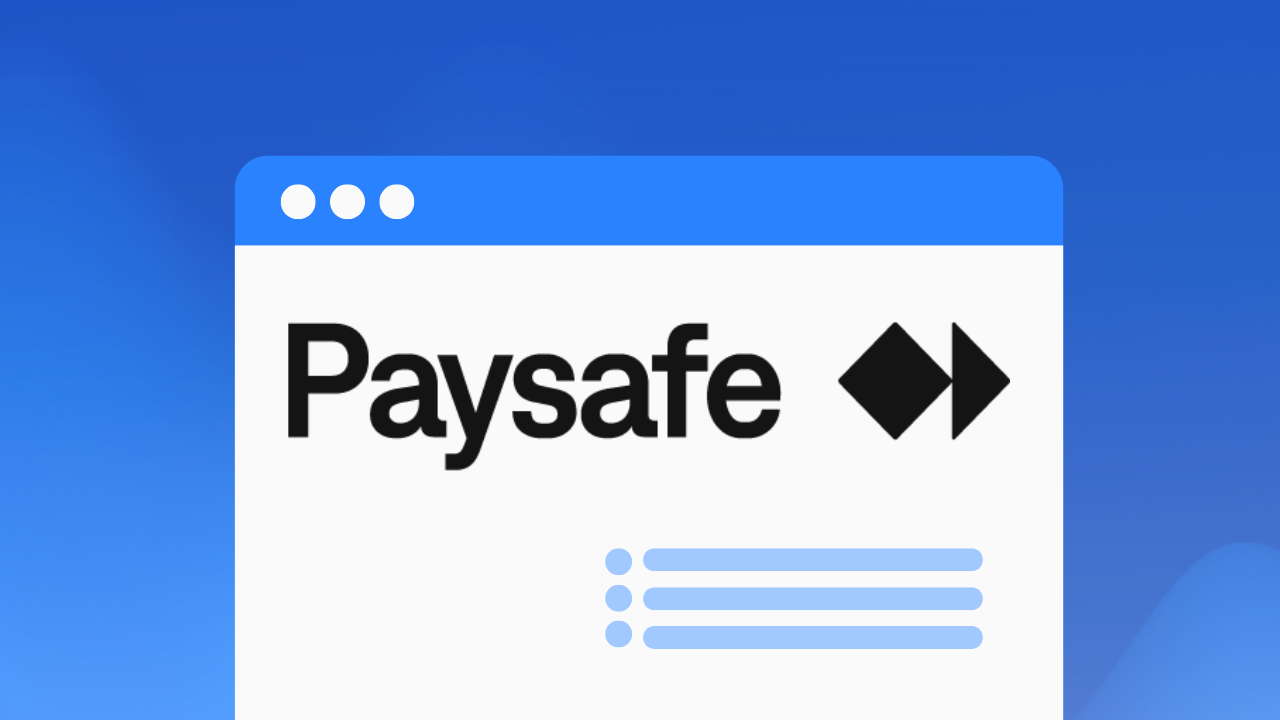
.png)
